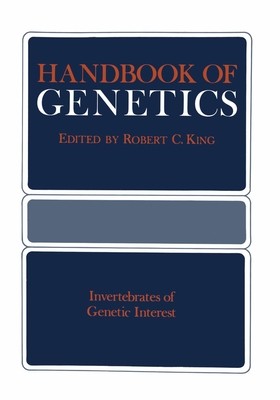
- We will send in 10–14 business days.
- Author: Robert King
- Publisher: Springer
- Year: 2013
- Pages: 874
- ISBN-10: 1461571472
- ISBN-13: 9781461571476
- Format: 17.8 x 25.4 x 4.6 cm, minkšti viršeliai
- Language: English
- SAVE -10% with code: EXTRA
Reviews
Description
The purpose of the first four volumes of the Handbook of Genetics is to bring together collections of relatively short, authoritative essays or an- notated compilations of data on topics of significance to geneticists. Many of the essays will deal with various aspects of the biology of certain species or species groups selected because they are favorite subjects for genetic investigation in nature or the laboratory. Often there will be an encyclo- pedic amount of information available on such species, with new papers appearing daily. Most of these will be written for specialists in a jargon that is bewildering to a novice, and sometimes even to a veteran geneticist working with evolutionarily distant organisms. For such readers what is needed is a written introduction to the morphology, life cycle, reproductive behavior, and culture methods for the species in question. What are its particular advantages (and disadvantages) for genetic study, and what have we learned from it? Where are the classic papers, the key bibliogra- phies, and how does one get stocks of wild type or mutant strains? Lists giving the symbolism and descriptions for selected mutants that have been retained and are thus available for future studies are provided whenever possible. Genetic and cytological maps, mitotic karyotypes, and haploid DNA values are also included when available. The chapters in this volume deal with invertebrate species that are favorites of geneticists. Attempts to obtain a chapter dealing with the genetics of Caenorhabditis elegans proved unsuccessful.
EXTRA 10 % discount with code: EXTRA
The promotion ends in 23d.14:47:16
The discount code is valid when purchasing from 10 €. Discounts do not stack.
- Author: Robert King
- Publisher: Springer
- Year: 2013
- Pages: 874
- ISBN-10: 1461571472
- ISBN-13: 9781461571476
- Format: 17.8 x 25.4 x 4.6 cm, minkšti viršeliai
- Language: English English
The purpose of the first four volumes of the Handbook of Genetics is to bring together collections of relatively short, authoritative essays or an- notated compilations of data on topics of significance to geneticists. Many of the essays will deal with various aspects of the biology of certain species or species groups selected because they are favorite subjects for genetic investigation in nature or the laboratory. Often there will be an encyclo- pedic amount of information available on such species, with new papers appearing daily. Most of these will be written for specialists in a jargon that is bewildering to a novice, and sometimes even to a veteran geneticist working with evolutionarily distant organisms. For such readers what is needed is a written introduction to the morphology, life cycle, reproductive behavior, and culture methods for the species in question. What are its particular advantages (and disadvantages) for genetic study, and what have we learned from it? Where are the classic papers, the key bibliogra- phies, and how does one get stocks of wild type or mutant strains? Lists giving the symbolism and descriptions for selected mutants that have been retained and are thus available for future studies are provided whenever possible. Genetic and cytological maps, mitotic karyotypes, and haploid DNA values are also included when available. The chapters in this volume deal with invertebrate species that are favorites of geneticists. Attempts to obtain a chapter dealing with the genetics of Caenorhabditis elegans proved unsuccessful.


Reviews